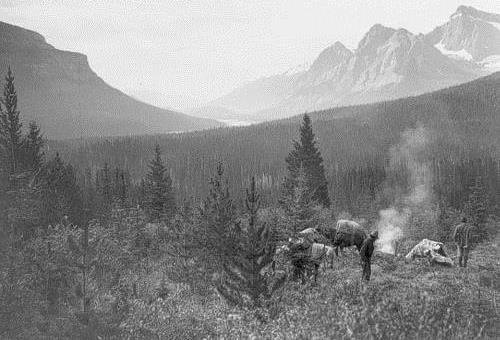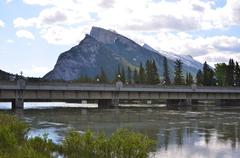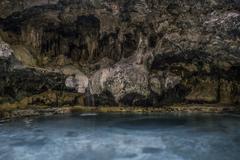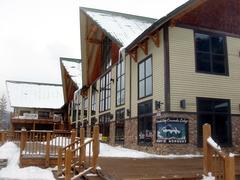
Howse Pass Banff Canada: Visiting Hours, Tickets, and Travel Guide
Date: 14/06/2025
Introduction
Nestled along the Continental Divide in the heart of the Canadian Rockies, Howse Pass is a place of profound historical, cultural, and ecological importance within Banff National Park. Once a vital Indigenous trade and migration corridor, this remote mountain pass later played a key role during the fur trade era. Today, Howse Pass offers adventurous visitors a rare opportunity to experience wild landscapes imbued with deep stories and enduring legacies. This comprehensive guide covers everything you need to know to plan a responsible and rewarding visit: from hours and access details to safety tips, Indigenous history, trail conditions, and essential travel advice.
Table of Contents
- Introduction
- Historical Background and Indigenous Significance
- Visiting Howse Pass: Essential Information
- Trail Description and Integration with the Great Divide Trail
- Safety Guidelines and Responsible Travel
- Frequently Asked Questions (FAQ)
- Visitor Tips and Key Information Table
- Conclusion
- References
Historical Background and Indigenous Significance
Indigenous Heritage and Early Use
Howse Pass has been a critical passage for millennia, first traversed by Indigenous groups such as the Ktunaxa (Kootenay), Stoney Nakoda, Cree, and Peigan nations. Archaeological evidence and oral traditions confirm its use for trade, seasonal migration, and cultural exchange, linking the Columbia River basin in British Columbia to the prairies of Alberta. The Howse River valley’s abundant resources and relatively low elevation (1,539 m / 5,049 ft) made it a preferred route for transporting obsidian, hides, plants, and spiritual traditions (Parks Canada; change.org).
Spiritual and Cultural Significance
The pass is not only a physical corridor but also a cultural and spiritual landscape. Ceremonies, gatherings, and exchanges took place along these ancient trails, reinforcing community bonds and connecting people to the land. Rivers such as the Howse and North Saskatchewan served as lifelines for sustenance and spiritual renewal, further deepening the Indigenous relationship to this region (change.org).
European Exploration and the Fur Trade
In 1807, the British explorer David Thompson, guided by Indigenous knowledge, became the first European to cross Howse Pass. Two years later, Joseph Howse of the Hudson’s Bay Company traversed the same route, leading to the pass being named after him. During the early 19th century, this trail was a key artery in the fur trade, but its prominence waned as other routes became favored for trade and railway construction (The Canadian Encyclopedia; thecanadianrockies.com).
National Historic Site Designation
Despite its reduced use after the fur trade era, Howse Pass was designated a National Historic Site of Canada, honoring its pivotal role in the history of exploration and Indigenous travel in the Rockies (The Canadian Encyclopedia).
Visiting Howse Pass: Essential Information
Location and Access
Howse Pass straddles the border between Alberta and British Columbia. The eastern approach begins at Saskatchewan River Crossing on the Icefields Parkway (Highway 93), about 80 km north of Lake Louise and 154 km from the town of Banff (Banff & Lake Louise Tourism). The western approach, less traveled and more remote, descends toward the Blaeberry River near Golden, BC (Parks Canada; Wikipedia).
- By Car: The Icefields Parkway is open year-round but check for seasonal weather closures.
- Parking: Ample parking is available at Saskatchewan River Crossing.
- Public Transit: No public transportation directly serves the crossing; private vehicles or guided tours are required.
Visiting Hours and Permits
- Hours: Howse Pass is accessible year-round; however, trail conditions may restrict access outside the summer months.
- Fees: There is no specific ticket for Howse Pass, but all visitors require a valid Banff National Park pass, available online or at park gates (Parks Canada).
- Backcountry Permits: Required for overnight camping; reserve in advance (Parks Canada).
Best Time to Visit
The optimal window for hiking and exploring Howse Pass is from late June to early September, when trails are most navigable and river crossings are safer. Snow and high water can persist into early summer and return in late September (The Banff Blog).
Trail Conditions and Safety
Howse Pass is a remote and challenging wilderness route:
- Trail Maintenance: Minimal to none; expect overgrown sections, blowdowns, and washed-out trail segments (Canadian Rockies Trail Guide).
- Navigation: Advanced map, compass, and GPS skills are essential; signage is sparse.
- Distance: Approximately 30–35 km one way from Saskatchewan River Crossing to the Blaeberry River.
- Elevation: Gradual ascent to 1,539 m at the pass.
- Hazards: Multiple unbridged river crossings, rapidly changing weather, and limited cell service.
Accessibility and Guided Options
- Accessibility: The viewpoint along the Icefields Parkway is accessible for most visitors, but the trail itself is suitable only for experienced hikers or horseback riders.
- Guided Tours: Some outfitters offer guided horseback trips; check with local Banff operators for availability (The Banff Blog).
- Indigenous-led Programs: Occasionally available; inquire with Parks Canada or local Indigenous groups for cultural programming.
Nearby Attractions
- Banff National Park Landmarks: Lake Louise, Moraine Lake, Columbia Icefield.
- Historic Sites: David Thompson Highway, Burgess Shale fossil beds (Parks Canada).
- Scenic Drives: The Icefields Parkway is consistently rated among the world’s most beautiful roads.
Trail Description and Integration with the Great Divide Trail
The Howse Pass corridor is part of the historic route traversed by fur traders and Indigenous travelers. Today, it forms a remote segment of the Great Divide Trail, a long-distance hiking trail along the Continental Divide. The trail features challenging navigation, river crossings, and wild terrain, making it suitable only for experienced backcountry enthusiasts.
- Trail Markings: Sparse; expect to rely on GPS and maps.
- Camping: Designated sites on the Alberta side; dispersed camping with Leave No Trace practices on the BC side.
- Emergency: Carry satellite communication due to lack of cell service.
Safety Guidelines and Responsible Travel
Trail and Weather Safety
- Preparation: Carry extra food, water, rain gear, and emergency shelter.
- River Crossings: Never attempt in high water; be prepared to turn back.
- Weather: Conditions can change rapidly; snow, rain, and storms are possible year-round (Travel Banff Canada).
- Avalanche Risk: Consult Avalanche Conditions in early season.
Wildlife Safety
- Bears: Both grizzly and black bears inhabit the area. Carry bear spray, hike in groups, make noise, and store food properly (Fresh Adventures; Adventures of Blondie).
- Other Wildlife: Moose, elk, cougars, and wolves are present.
Responsible Travel and Cultural Respect
- Leave No Trace: Pack out all waste, stick to established trails, and avoid picking plants or disturbing wildlife (Banff Everyday).
- Cultural Sites: Do not disturb archaeological features or historical markers.
- Indigenous Recognition: Honor the pass’s role as an Indigenous heritage site by learning about its history and engaging respectfully with interpretive content (Parks Canada).
Emergency Preparedness
- Communication: No cell service; carry a satellite device and leave your itinerary with someone you trust (Park Pilgrim).
- Essential Gear: Bear spray, map, compass, GPS, first aid kit, emergency shelter, extra supplies.
Park Regulations
- Pass: Valid Parks Canada pass required.
- Camping: Camp only at designated sites on the Alberta side; follow all fire regulations.
- Pets: Dogs must be leashed; consider leaving pets at home for their safety and to protect wildlife.
Frequently Asked Questions (FAQ)
Q: What are Howse Pass visiting hours?
A: The area is accessible year-round, but best visited June–September. There are no strict hours, but park gates have seasonal opening and closing times (Parks Canada).
Q: Do I need tickets to visit Howse Pass?
A: No separate ticket is required, but you must have a valid Banff National Park pass. Backcountry permits are necessary for overnight camping.
Q: Is Howse Pass suitable for families or beginners?
A: The trail is rugged and recommended only for experienced hikers; guided horseback tours offer safer options for less experienced visitors.
Q: Are there guided or Indigenous-led tours?
A: Occasionally, yes. Horseback tours are available and Parks Canada sometimes collaborates on Indigenous-led educational programs.
Q: What wildlife precautions should I take?
A: Always carry bear spray, hike in groups, make noise, and store food properly.
Visitor Tips and Key Information Table
| Feature | Details |
|---|---|
| Trail Length | ~30–35 km one way |
| Elevation | 1,539 m (5,049 ft) at the pass |
| Access Points | Saskatchewan River Crossing (AB); Blaeberry River (BC) |
| Maintenance | Minimal to none; advanced navigation required |
| Best Season | Late June–September |
| Permits | Parks Canada pass; backcountry camping permit (Banff NP) |
| Camping | Designated sites (AB); dispersed (BC, use Leave No Trace) |
| Wildlife | Bears, moose, wolves; bear safety essential |
| Emergency Services | No cell coverage; carry satellite device |
| Public Transport | None; private vehicle required |
Visuals and Media
Insert high-quality images of Howse Pass’s alpine scenery, historic trail maps, and Indigenous artifacts with descriptive alt text such as “Howse Pass scenic view in Banff National Park” and “David Thompson historic trail map.” For an interactive experience, visit the virtual tour of Howse Pass and surrounding areas.
Conclusion
Howse Pass stands as a testament to the intertwined natural wonders and rich cultural narratives of Banff National Park. Whether you are drawn by its Indigenous history, fur trade legacy, or wild backcountry challenge, responsible and well-prepared travel ensures a safe and meaningful experience. Obtain the necessary permits, respect the land’s cultural significance, and complement your adventure by exploring nearby attractions like the Icefields Parkway and Columbia Icefield. For real-time updates and planning tools, consult the Parks Canada website or download the Audiala app.
References and Further Reading
- This is a sample text. (change.org)
- This is a sample text. (Parks Canada)
- This is a sample text. (Canadian Rockies Trail Guide)
- This is a sample text. (Parks Canada - Safety)
- This is a sample text. (The Canadian Encyclopedia)
- This is a sample text. (Great Divide Trail Association)
- This is a sample text. (Banff & Lake Louise Tourism)
- This is a sample text. (Out There Outdoors)
- This is a sample text. (thecanadianrockies.com)
- This is a sample text. (Historic Places Days)
- This is a sample text. (The Banff Blog)
- This is a sample text. (Wikipedia)
- This is a sample text. (Park Pilgrim)
- This is a sample text. (Banff Everyday)
- This is a sample text. (Fresh Adventures)
- This is a sample text. (Adventures of Blondie)
- This is a sample text. (Travel Banff Canada)
- This is a sample text. (Eternal Arrival)



